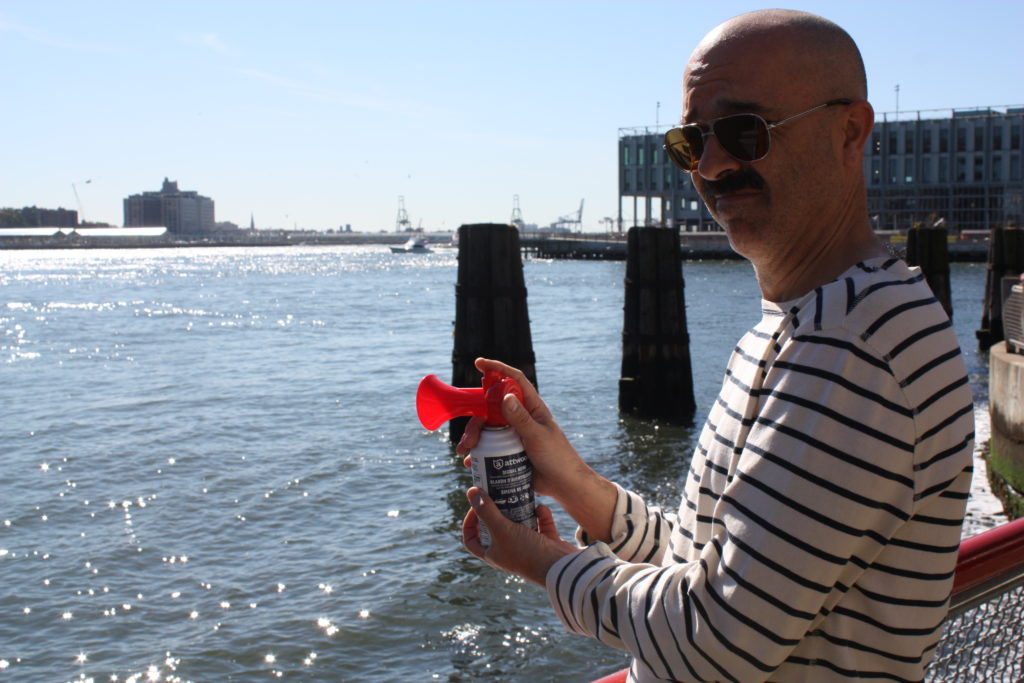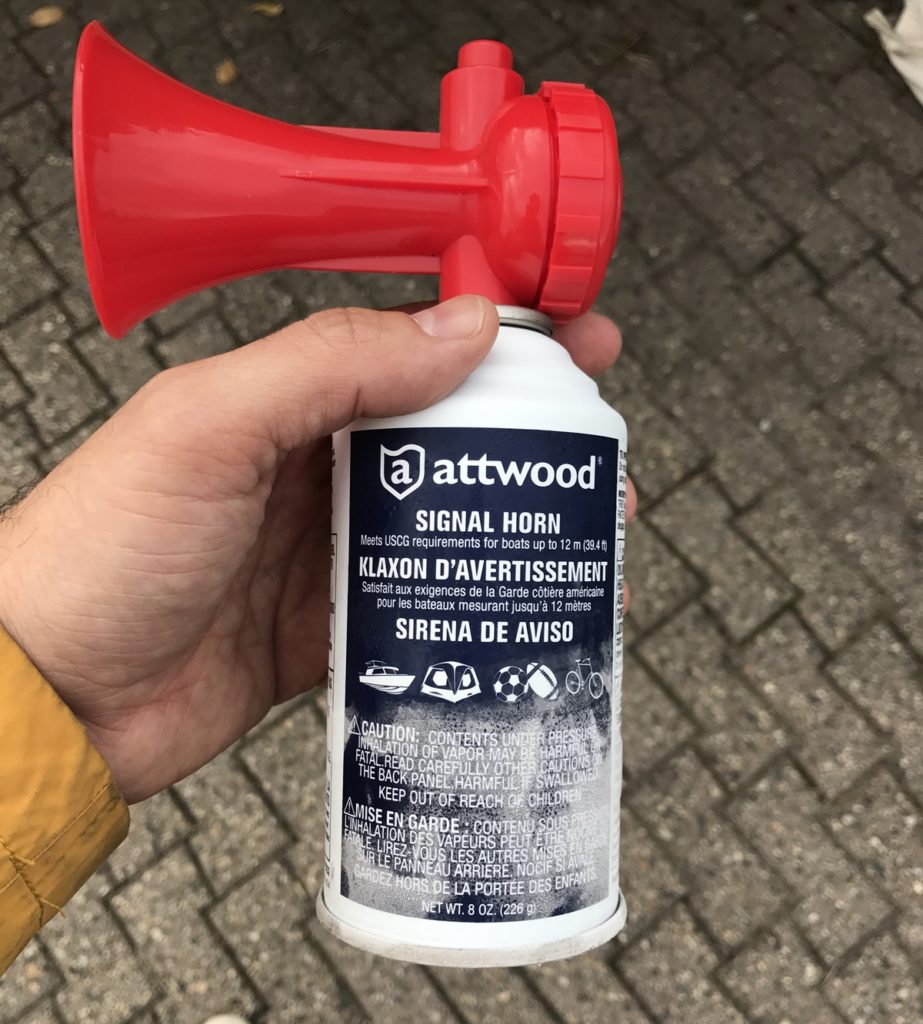Art World
I Went to a Public Park by the East River and Sounded Six Air Horns Like a Crazy Person. Here’s Why.
Why would I do such a thing? Let me tell you my story.

Why would I do such a thing? Let me tell you my story.

Brian Boucher

On a recent Saturday, I set off from my aerie in Upper Manhattan and made my way via subway and Uber to Lighthouse Park, a stretch of green at the northern tip of Roosevelt Island. Once there, I found a neglected spot, a parking lot behind Coler Goldwater Hospital, away from the lawns and benches surrounding the lighthouse, and took from my bag a half-dozen air horns.
At precisely 3:45 p.m., I took one of them in my hand and pressed the button. A hideously loud sound came forth, and I pointed it to the east, in the direction of Queens, until it was empty; I then proceeded to blow the second and third horn, each until they gave up the ghost. I blew them mostly in short bursts, punctuated by longer ones, sometimes turning around 180 degrees to spread the sound near and far.
Afterwards, I wandered the park for a bit and read a few pages from the New Yorker‘s Aung San Suu Kyi profile, until an hour passed. I then took out the remaining three air horns and discharged them, blasting the first two simultaneously so the unpleasant deed would be done sooner.
I wore earplugs throughout; the people strolling the park, looking for a moment of calm in their day, were not so lucky.
So, why in the world would I perform such a sadistic act—and, considering how nervous I was about being hassled by the cops or assaulted by aggrieved onlookers, a masochistic one?
It was, of course, an art piece. I was acting at the behest of an artist I know, Timothy Hutchings. He and other alumni of Maine’s prestigious Skowhegan residency program had been invited to take part in the annual Skowhegan Performs event, hosted by Socrates Sculpture Park in Queens. Tim couldn’t make it, which is why I pointed my horns at the proceedings from across the East River while visitors at the sculpture park were treated to various other performances: a long-haired man in a baseball hat pushing a lawnmower, a woman rolling on the ground in a full-length mesh tube, someone in a mask sloshing mud around a hole in the ground.
I met Tim a decade ago, when Art in America assigned me to review a show of his. A gaming devotee, he had constructed The World’s Largest Wargaming Table (2006). Fully landscaped with rolling hills and tiny stands of trees, just waiting for tin soldiers to take up their positions, it took up the entirety of New York’s I-20 gallery.
Tim used to live in New York but moved a few years ago to Portland, Oregon, for family reasons, and these days he’s mainly engaged in teaching, as well as in game design. He’s gotten some notice for “Dear Leader,” in which participants play Kim Jong Un and his closest advisors, working out challenges like, “We have discovered graffiti on the streets of Pyongyang that represents the decadent and warped capitalist monsters known as ‘Pokémons.’ How can we purify the minds of all who may have seen these disturbing images?”
The piece I helped bring into being had nothing to do with North Korea, but rather a different kind of alienation.

As the gas escapes the container, frost forms on the outside. Photo by the author.
Tim meant the piece to be an allegory of the plight of the artist—an artist much like himself—who works at a distance from the art world’s limelit centers, whose gallery shows are few, for whom no more Art in America reviews are apparently forthcoming. This artist, the allegory goes, is relegated to blaring his or her art from a distance, hoping someone in the thick of things will take note. (Tim later even suggested a headline for an imagined essay about his inviting me to be his proxy: “How to Get Ahead in the Art World? I Got a Critic to Toot My Horn For Me.”)
Anyway, that’s how I came to be the jerk tooting tinnitus-inducing air horns in a public park.
In some ways it wasn’t as awkward as I imagined. As a handful of fishermen walked by, one smiled and asked if I was using the horn to summon flounder. Families relaxed in the park a few moments’ walk away; folks rode by on bicycles; joggers jogged. It was as though no one noticed me making my racket, or perhaps they found it—in a city full of strident distractions—beneath their dignity to pay attention. For that afternoon, I was just that loony guy on the subway delivering a tinfoil hat rant, whom you ignore, hoping he’ll go away.
Thinking about the work later, other meanings came to mind. I was briefly masquerading as a tiny piece of the city’s infrastructure, a lone signal on the fritz. Tim operated on me remotely; I, in like manner, operated on those at the park from a half-mile away. Per Tim’s original project for the proposal, the piece refers to Dada and—with an eye to his isolation from the art world—abject art.
But all the above are just the heady thoughts of an art critic. What you, dear reader, need to know about air horns is that they are loud. So loud they register on your whole body, not just your ears. They’re can’t-think-about-anything-else loud. So if an artist asks you to discharge them, take a tip from one who’s tried it: don’t forget the earplugs.